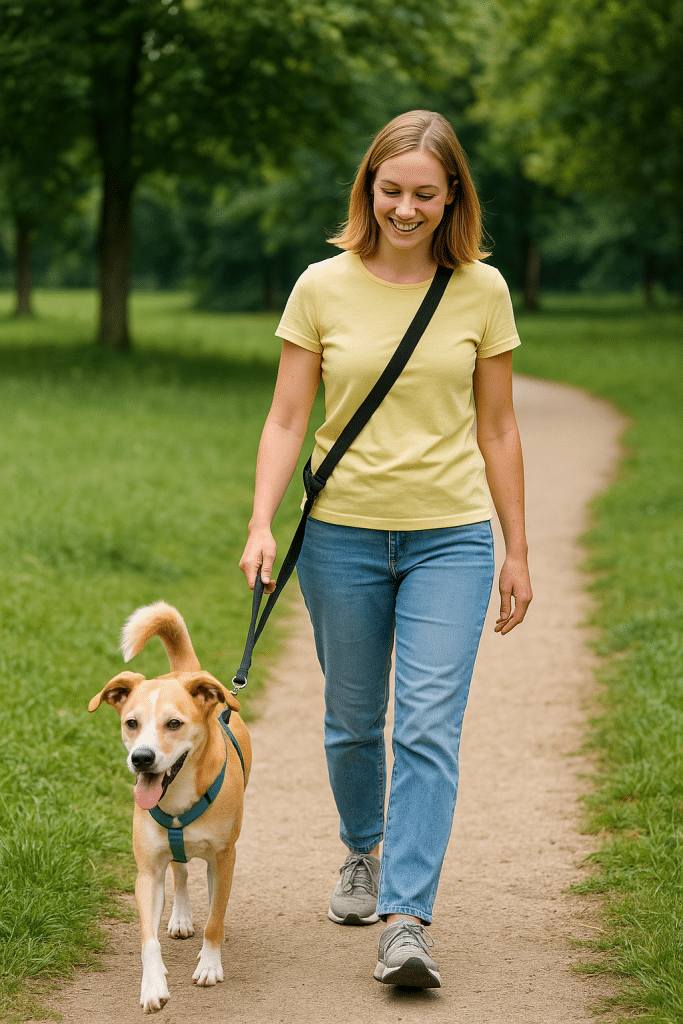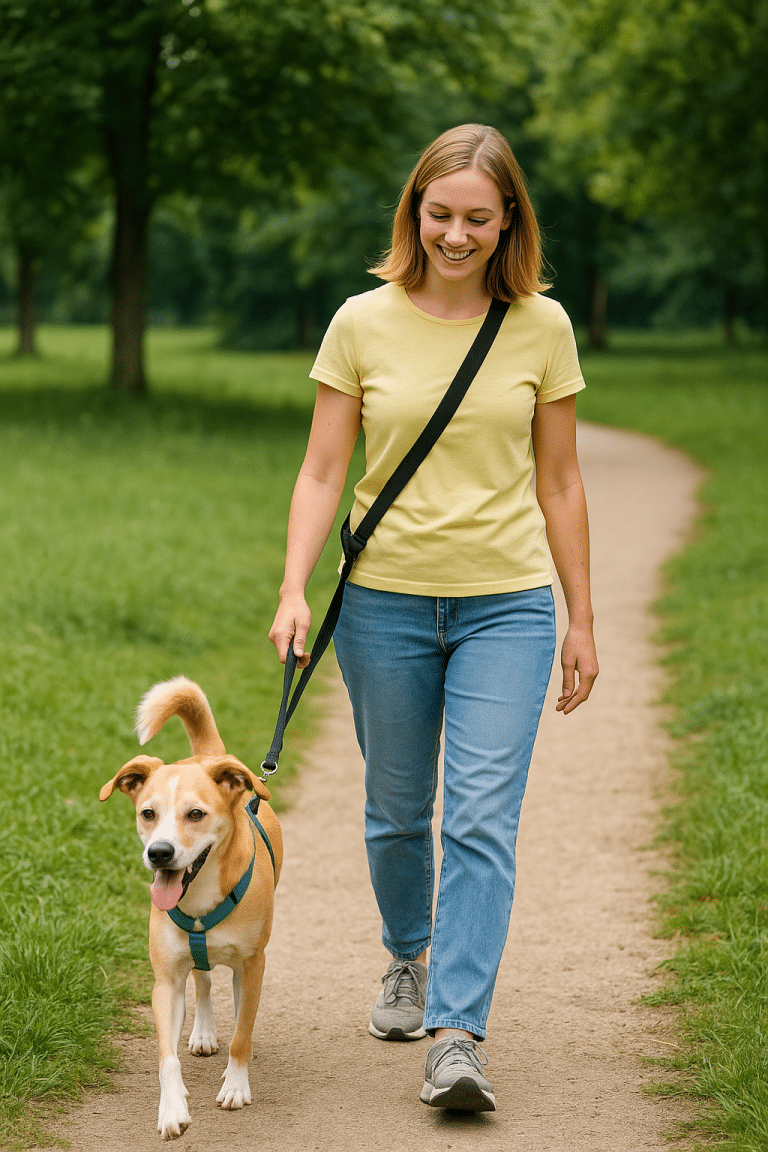5 Tips for Walking a Reactive Dog

Walking a reactive dog can feel challenging, but it doesn’t have to be stressful. With the right approach, you can make every walk calmer, safer, and more enjoyable for both you and your dog. In this guide, I’ll share five practical tips to help you navigate walks with confidence and positivity.
Start in a Low-Stress Environment
Choose quiet routes where your dog feels safe. Avoid busy streets or dog parks at first—too many triggers can overwhelm your dog and make reactivity worse. The goal is to build confidence gradually by walking in calm, predictable spaces.
Use the Right Equipment
A well-fitted harness is essential for reactive dogs. Avoid retractable leads—they can cause sudden tension and reduce your control. Choose a sturdy lead (around 4–6 feet) and always use positive reinforcement. Comfort and security help your dog feel calmer on walks.
Keep a Safe Distance
When you spot a potential trigger such as another dog, a cyclist, or a busy area, create as much space as possible. Crossing the road or turning down a quiet street can prevent reactive outbursts. Your goal is to keep your dog “under threshold,” meaning calm enough to listen and learn.
Use the Right Equipment
Always carry high-value treats during walks. When your dog notices a trigger but stays calm or looks back at you, reward that behaviour immediately. Positive reinforcement helps your dog associate good things with staying relaxed, and it builds trust and confidence.
Have an Exit Plan
If your dog starts to feel overwhelmed, it is okay to change direction or head home early. Ending a walk on a positive note is far better than pushing through and creating a stressful experience. Over time, these calm endings will help your dog feel safer on future walks.
